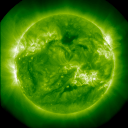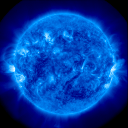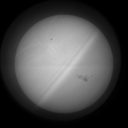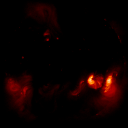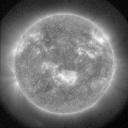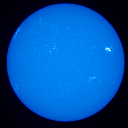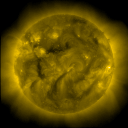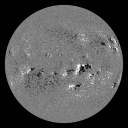Project Description
The description given for my project was as follows:
"Solar flares occur when a large amount of energy is converted into X-rays, heat and supersonic fluid motion. Prior to the flare this energy is stored as magnetic field filling the atmosphere above sunspots and related features called active regions. The energy is released suddenly when an electric field changes the connectivity of several coronal magnetic field lines. A single change of this kind permits the newly configured magnetic field line to retract rapidly, releasing energy exactly as would an elastic under tension. The physics governing the retraction of the reconnected field line is almost exactly the same as those of an elastic string. One novel feature is that the fluid in the field line moves faster than the speed of sound and therefore creates shocks, which are believed to heat the plasma to tens of millions of Kelvins.
In this project the student will run a computer program which solves the dynamical equations for the retracting field line. The aim is to study how the shape of the initial field line influences the density and temperature of the shocked fluid."
Specifically, my project involved analysing the dynamics of a retracting magnetic field line following the occurence of magnetic reconnection. It differed from previous work carried out by Professor Longcope and others in that, in my case, the field line reconnected with two separate field lines (at two distinct points along its length) simultaneously. My first task was to set up the initial condition for this experiment, which involved writing a code which constructs the field line based on input parameters. Then, I ran the code mentioned in the above description (known as PREFT) on a variety of these initial states, occasionally changing parameters such as bending angle or initial field strength, to analyse how the presence of a second bend influences the retracting field line's behaviour. As expected there were some notable differences between the two cases, mostly driven by the presence of an extra set of shocks in the double-angle case. More is said on the results of my project here.
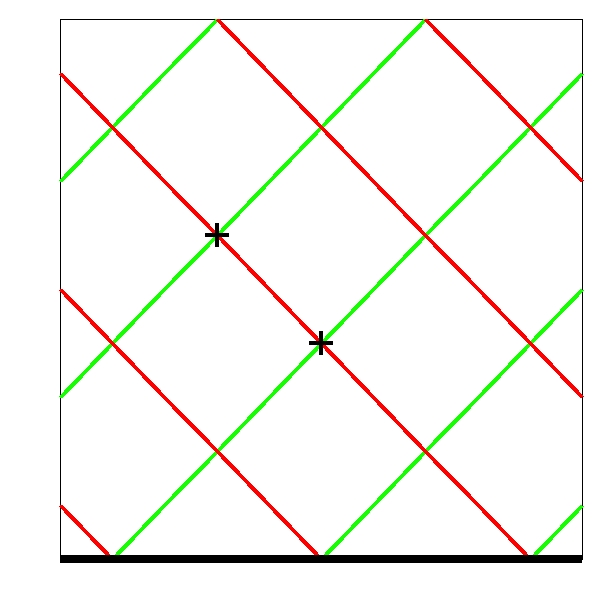
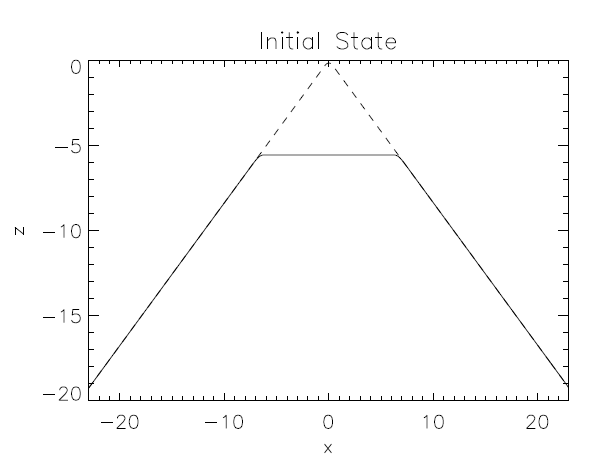
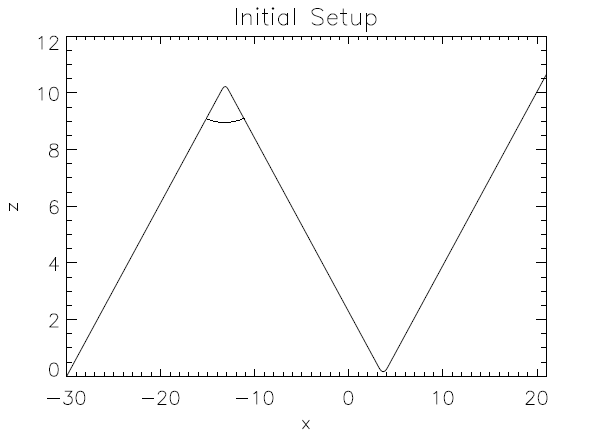
Left: an initial setup with the solid black line as the photosphere, green field lines away from the surface and red in to the surface. Pluses indicate potential points for simultaneous reconnection. Centre: an initial state following only one reconnection event (dotted line indicates position after some time). Right: an initial state following simultanoues reconnection.
I worked in a research group with two other REU students. Filip Rozpedek, a fellow St. Andrews student, examined the process of chromospehric evaporation, while Joshua Mirth of Hillsdale College examined the dynamics of a retracting field line formed from field lines with distinct plasma properties.
